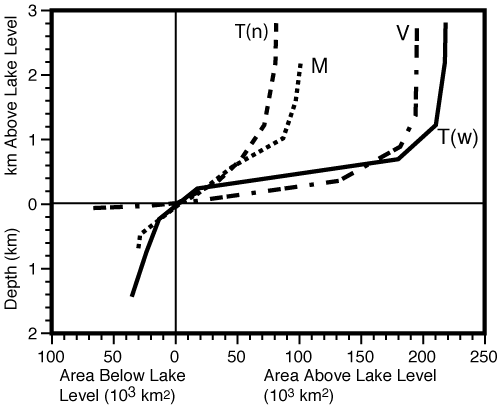


 |  |  | 20.4 Eutrophication in Lake Victoria |
In Africa, burning, deforestation and increasing agricultural activities are all results of increased population density, which have negative impacts in the East-African Great Lakes region. Compared to Lake Victoria, in Lake Malawi and Tanganyika these effects are currently undetectable [53] because the latter lakes have steep near-shore topographies (Figure 4). They are susceptible to soil erosion after disturbance (for example the northeast shores of Lake Tanganyika) but are not attractive for dense human population or cattle grazing. Hence the Lake Victoria catchment is much more densely populated than the other African Great Lakes (Figure 5). Nevertheless, cultivation and deforestation increasingly takes place in the latter lakes. A potential exists for land degradation, local increase in sediments and nutrient inputs in the very near future except for the extreme end of Tanganyika where near-shore population densities are presently low around the entire lake (Figure 5).

The introduction of the Nile perch in the 1950's and of the water hyacinth in Lake Victoria has also contributed greatly to the dramatic shifts in the lake's ecosystem during the past few years. Currently the presence of water hyacinth has also been reported in Lake Malawi, within the vicinity of Sugar Corporation of Malawi-Dwangwa Mill and Ethanol Company Limited and in the Shire River, the outlet of Lake Malawi (Figure 1). This may be of great concern to Lake Malawi. If population growth trend continues at the current rate (2.8% y-1) in Malawi, cultivation (e.g. sugar plantation) and deforestation on steep slopes including industrialisation along the lakeshore will definitely lead into increased river runoff. This may result in more nutrient and sediment loading in the lake. Certainly the density of people occupying a catchment and the type of land-use (e.g. agriculture) they employ, will determine the effect the population can have on a lake.
 |  |  | 20.4 Eutrophication in Lake Victoria |